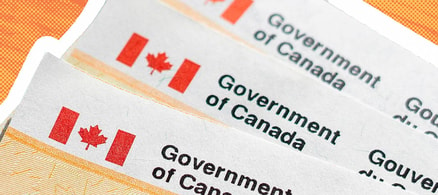But saving enough money for retiring in Canada is still possible if you make it a crucial part of your financial plan. For many people, the big challenge is that retirement is an abstract concept clouded by so many unanswered questions, that it can be hard to prioritize it over other more pressing concerns. Before you can plan your retirement, you’ll have to answer:
- How much do I need to retire in Canada?
- Where should I be saving?
- How to save money for retirement?
- When should I start saving for retirement, and if I haven’t started yet, is it too late?
- What are the best retirement plans in Canada?
If these questions have kept you from starting retirement planning because the whole process seems so daunting and impossible, we’re here to help with these retirement planning tips. Planning for retirement does mean considering a lot of different factors and variables, but we’re going to break down each one below. By the end of this article, you’ll have a clear vision of your path toward retirement.
At what age can I retire?
The first step in retirement planning is to determine at what age you’ll retire. Retirement age is the first question because it gives you a timeline to work with for saving. Whenever I hear “retirement age,” I think 65, but that’s not the standard for retirement anymore. More Canadians are staying in the workforce past age 65 than ever before. According to Statistics Canada, only 7% of the workforce was aged over 65 in 2005. In 2015 that number approached 13%. Some personal finance experts like Suze Orman advocate retiring even later, at age 70.
It’s really a personal choice, and there’s no “right” age to retire. Whether you are planning on retiring early or working until your 70s makes a big difference in how long you have to save for retirement, so give this some thought before moving on. You can always adjust your timeline later.
How much do I need to retire in Canada?
How much do you need to retire in Canada? Once you know what your timeline for saving is, it’s easier to calculate exactly how much you should be saving for retirement every month. Determine your savings rate per month involves estimating your retirement income and then working backward using a reasonable rate of return. A good place to start is 10% of your net income. This handy “How much do I need to retire calculator” can also help make the math easier.
READ MORE: How much money do I need to save for retirement?
When should I start saving for retirement?
The sooner you start saving, the better. This is especially important for millennials, who are more likely to switch jobs or be unemployed or underemployed at some point in their careers. Don’t wait to start saving once you’ve checked off your major life goals like home ownership or parenthood. Start now, even if it’s just socking away a few hundred dollars per month. The earlier you start saving, the less you’ll have to save overall, thanks to the magic of compound interest.
READ MORE: Compound Interest Explained
How to save for retirement
Now that you have a general idea of how long and how much you need to save, let’s talk about where to put your money every month. The Government of Canada offers two registered accounts that help you save for retirement by alleviating some of the tax burden on your money. They are:
Tax-Free Savings Accounts (TFSA)
For 2022, the annual contribution limit is $6,000. Canadians who were at least 18 years of age in 2009 can have up to $81,500 total in a TFSA. The money you contribute to your TFSA grows tax-free, and your contribution accumulates if you don’t use it, even if you’ve never opened a TFSA before. There are no fees, taxes, or penalties when you withdraw your money.
READ MORE: A guide to TFSAs
Registered Retirement Savings Plan (RRSP)
An RRSP lets you contribute up to 18% of your previous year’s earned income (to an annual maximum, which is $29,210 for 2022). You don’t pay tax on contributions, which usually results in an income tax refund in the years you contribute. It’s important to note that you do pay tax on the money when you withdraw it. That makes this account ideal if you earn more now than you plan to in retirement.
READ MORE: A Guide to RRSPs
How to choose between an RRSP and TFSA?
You might be asking: TFSA vs. RRSP? I’m going to throw another rule of thumb at you: If you’re earning more now than you will in retirement, contribute to your RRSP. If you’re earning less, a TFSA makes more sense, tax-wise.
READ MORE: TFSA vs. RRSP
Where should I invest my money?
Just choosing whether to put your retirement money in a TFSA or RRSP isn’t enough. You also need to decide how to invest that money. When it comes to saving for retirement, even high-interest savings accounts aren’t going to cut it. To become a smart investor, you must use long-term saving strategies that are proven to work. There are three main choices for Canadians investing for retirement: mutual funds, robo-advisors, and discount brokerages. Let’s look at each option below.
Mutual funds
A mutual fund is a pool of money managed by a professional money manager, who invests the money on your behalf in an attempt to make it grow. Mutual funds are the most popular way to invest in Canada, Canadians have over $790 billion of our assets in mutual funds according to Canadian Living. But that doesn’t make them the best place to put your money.
Mutual funds have come under fire in the past because their high fees erode your overall returns. Canadians pay some of the highest mutual fund fees in the world, an average of 2.5%, and those high fees don’t correlate with better fund performance over time. While mutual funds are easily accessible through any of the big banks, if you are comfortable banking online, there are better places to put your money, such as robo-advisors and online brokerages.
READ MORE: Mutual funds 101
Robo-advisors
We’ve known for years that mutual funds are an expensive way to invest your money, but they were the only option besides a completely DIY approach. This is no longer true now with the rise of robo-advisors — a digital investment company operated by humans (spoiler alert: there are no actual robots). They deliver their financial advice and investment management online through a series of automated questionnaires. Since you don’t meet with a human, and your money is usually invested passively with exchange-traded funds (ETFs), the fees are dramatically lower (usually less than 1%), but the returns are still on par with what you’d expect from mutual funds (or sometimes better).
Robo-advisors are an excellent middle ground if you’re comfortable signing up for financial products online and if you want a low-fee, minimal-effort investment portfolio that will earn enough interest to make your retirement a reality. The best part? Most Canadian robo advisors, such as Wealthsimple, will automatically create a diversified, balanced portfolio for you. Plus, they offer much lower fees than a bank or brokerage — saving you even more money in the long run.
READ MORE: Complete guide to Canada’s robo-advisors
Discount brokerages
A discount brokerage is an online platform that lets you buy and sell securities yourself, with no oversight and no advice. The fees for discount brokerages are rock bottom and the best bang for your buck — and some even offer zero-commission trading. But the catch is that you have to build your portfolio yourself.
Fortunately, it’s easy to invest your money yourself using a discount brokerage by using the couch potato strategy, a passive investing technique to building a diversified, low-maintenance portfolio that will track the returns of overall stock and bond markets with minimal cost and effort. Your best bet is to open an account with an online discount brokerage, so you can buy low-fee ETFs. If you really want to go the easy route, you even opt for an all-in-one ETF.
The couch potato strategy is the least expensive of these three options and is a good choice if you don’t mind purchasing ETFs manually, riding out market corrections without changing your asset allocation, and periodically re-balancing your portfolio.
READ MORE: The best discount brokerages in Canada
Is the Canada Pension Plan good enough?
Some personal finance experts like to joke that you shouldn’t rely on government benefits to fund your retirement because these entitlements might not be around when you retire. Although I’m not quite that bullish, I do think that you should only consider your government benefits a supplement, and not a significant source of your retirement income.
For example, let’s look at the Canada Pension Plan. You know, that deduction on your paycheck every month? That money isn’t going towards funding a cushy retirement for you. Instead, CPP is meant as a supplement only. According to the Financial Services Commission of Ontario, the maximum CPP benefit in 2018 was $13,600 per year, and in 2016, only 6% of Canadians qualified for the maximum. Not exactly luxurious.
READ MORE: A guide to retirement savings plans in Canada
Conclusion: The most important part of retirement planning is starting NOW
Planning for retirement is a daunting process, and it’s this mental roadblock that keeps many Canadians from even starting. But instead of obsessing over the perfect place to save your money, the perfect amount to contribute, or the perfect robo-advisor for your needs, the most important thing is to just start right now. Remember that establishing the good habit of saving for the future is the most important part of the process – you can adjust everything else along the way.
READ MORE: What are RRSPs, TFSAs, and RESPs anyway?





